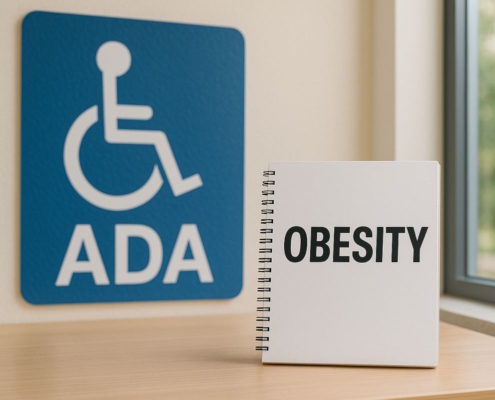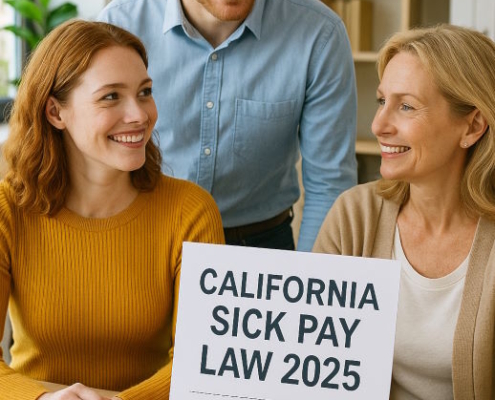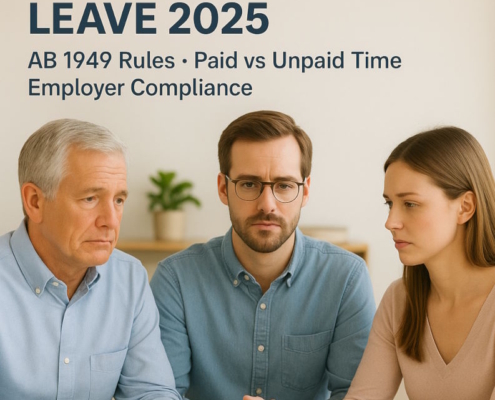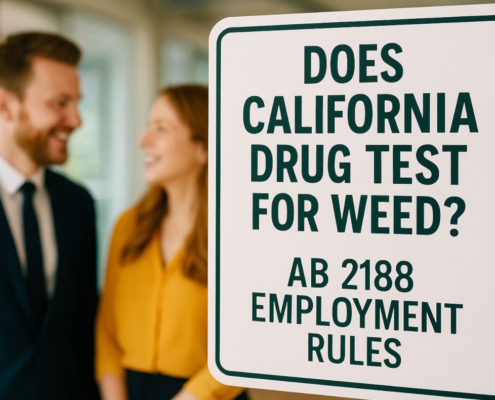What are California’s mandatory break laws?
Employers in California are required to give rest and lunch breaks to nonexempt workers according to labor laws. Workers’ break entitlement is proportional to their shift duration and the number of breaks they have previously waived. It is crucial to be aware of the 2024 California mandatory break rules.
Breaks for meals
For shifts longer than five hours, nonexempt California employees are required to have a 30-minute meal or lunch break. Make sure to start your unpaid, uninterrupted break before your fifth hour of work ends. If your workday does not exceed 6 hours, you will not be required to take this break.
You are required to take an additional 30-minute unpaid dinner break if your workday exceeds 10 hours. It is possible to forego the meal break if:
- That workday, you won’t put in more than twelve hours.
- You didn’t skip your first break for lunch.
Lunch breaks and meals have to conform to particular standards in order to be considered unpaid.
Breaks for Rest
You are required to take a 10-minute paid break for every four hours that you work. The standard workday for an employee is eight hours with two breaks, and four hours with one. When possible, try to schedule these breaks halfway through the allotted four hours.
Workers whose shifts don’t exceed 3.5 hours are exempt from mandatory rest breaks.
Workers who aren’t excluded from overtime pay may be eligible for more than one food and rest break per shift. No employer has the right to discourage employees from taking breaks or to have them consolidate multiple breaks into one. Still, you have the option to forego certain breaks if you would like.
When Do Workers Have the Right to Take Lunch and Rest Periods?
The vast majority of nonexempt workers receive their pay on a weekly basis, while there are several notable exceptions. Worker exemptions do not apply to rest breaks, although meal breaks are. For the most part, these are the conditions that exempt workers must satisfy:
- Their monthly income is greater than or equal to two times the federal minimum wage for full-time workers.
- Their work often calls for them to make decisions without direct supervision.
- They spend over 50% of their time in executive, managerial, professional, or administrative roles.
- Domestic workers and agricultural laborers are two examples of workers whose rights to rest and lunch breaks vary. Workers who must go outside to do their jobs have the right to seek shade at any time they feel the need. That way, workers won’t get sick from being in the heat.
Some healthcare workers and independent contractors are also exempt from these break laws. Unionized industries with different schedules established through collective bargaining agreements are likewise exempt from meal break rules. One example of an industry is:
- Commercial drivers
- Construction
- Security officers
- Film industry
- Gas and electricity providers
What Qualifies as a Proper Mandatory Meal or Rest Period?
The only way for employers to say they gave their employees the required break is if the break:
- Is uninterrupted
- Removes the worker from all responsibility for their job
- Permits workers to take lunch breaks away from the office.
- Does not face any obstacles or discouragement from the company
Only breaks that fulfill these criteria will be counted and will not be compensated. For the majority of jobs, it is against the law for your employer to make you work during your breaks or that you must be available at all times. In other words, it’s the same as ignoring your mandatory breaks.
No company can legally make an employee eat or take a break against their will. All they need to do is give workers a fair chance to take a break. It is entirely up to the worker to decide whether to work during their break or not.
Some industries require employees to eat while on the clock. Working during your meal break is only permissible if it is absolutely necessary for the performance of your job and in exchange for payment. One example is being the sole employee on call. It is possible to have meals while on the clock if both you and your employer sign a formal waiver approving the practice. The worker has the right to revoke this at any time.
The Mandatory Meal and Rest Laws of California
California’s employment rules are pretty strict compared to those in many other states. A significant amount of California legislation is devoted to protecting employees’ rights to fair and ethical treatment in the workplace.
Having said that, not all businesses follow the letter of the law. In order to safeguard yourself from unjust treatment at work, you should educate yourself on your employee rights.
There are regulations in California that spell out exactly how much time workers should have for breaks and lunch. What follows is an outline of the key points of these statutes. Seek the counsel of an experienced California meal and rest break attorney if you feel your rights have been infringed upon.
Rest Periods and Meals
The amount of time that employees in California are required to give their workers for lunch breaks and rest breaks is not standardized. The duration of a worker’s shift determines the specific legal requirements.
Here are the main points of the law as it stands right now:
A 30-minute meal break is required of all employees whose shifts exceed five hours per day; however, if the total number of hours worked does not exceed six, the employer and employee are both allowed to waive this break.
Two 30-minute lunch breaks are required for staff members who work more than 10 hours a day; however, if the total number of hours worked does not exceed 12 hours, the employer and employee are free to forgo the second meal break.
Nobody, not even a boss, has the right to cut into an employee’s lunch or rest break. Imagine you are having your lunch when your boss tells you to answer a work-related email. Here, they can’t fire you for refusing to do what they want. You are free to finish your sandwich without consequences.
California law protects workers’ rights to a variety of breaks, not just meal breaks. There should be a 10-minute break between every four hours of work; this break need not coincide with mealtime. Midway through each four-hour shift is a good time for employees to take these breaks. It would be ideal if they could take these breaks in different parts of the office than where they normally get their job done.
Forgoing California Breaks
In certain cases, both the employer and the worker in the state of California have the option to forego a meal break. This shouldn’t happen very often. In a perfect world, managers and workers would only agree to forego breaks if doing so would significantly hinder productivity. A company shouldn’t be able to take advantage of this loophole too frequently.
What an employee should do if they miss a meal break
It could be difficult to know what to say as an employee when you are denied your lunch break at work. It’s a bit awkward, isn’t it? Not to worry! To help you stand up for yourself and demand justice at work, we’ve put together this brief guide.
- Make Note of the Problems: Keep a meticulous log of all the times that lunch was either not given or was missing. Write down the exact times and dates of any missed breaks, as well as any correspondence you had with your managers or coworkers about them. If you can, try to collect any relevant records that prove there were no breaks, such emails, texts, or time sheets.
- Go over the company’s rules: See the company’s policy on lunch breaks or employee handbook for further information. Be well-versed in both the company’s policies and any applicable laws regarding breaks. Employees must be well-versed in the meal break regulations imposed by both federal and state governments. Working more than five hours in a single shift typically entitles workers to an a meal break in California, for instance.
- Talk to your boss about it: When you miss a lunch break, you should let your boss or supervisor know right away. Outline the problem in detail and, if necessary, cite relevant company policies or legal mandates. Make sure the organization follows all the rules for lunch breaks and gives employees the breaks they need.
- Stick to the business’s formal rules: If talking things out informally doesn’t work, you should file a formal written complaint with HR or go through the grievance procedure at your employer. Make sure you inquire about the status of your complaint and any planned efforts to resolve it by following up.
If the problem continues and you are still not getting the breaks you need, it’s a good idea to go to a labor law attorney who specializes in employment law. After reviewing your case in a first session, they will advise you on your rights and possible next steps based on your specific situation. If you believe you have been the victim of a labor law violation, an employment attorney can assess your situation, advise you on your best legal options, and advocate on your behalf.
The next step, should the problem continue after contacting the relevant government agencies—for example, the DLSE in California—is to submit a formal complaint. They will look into the matter and, if needed, take enforcement measures. When disagreements arise over wages or hours worked, the United States Department of Labor (DOL) steps in to resolve them. Employee Assistance Programs (EAPs) are another choice to consider; these programs offer assistance and resources to any employee who is going through a tough time at work.
Think about your other options: To solve the issue while still meeting legal requirements, you and your employer should explore discussing flexible work arrangements or alternative options. The specifics of the situation will determine the best course of action. The laws meant to safeguard workers have provisions that you should be familiar with so that you can demand fair treatment from your employer.
As long as you follow these procedures, you should be able to resolve the matter in a professional legal manner while also protecting your rights.
Penalties for Disregarding California’s Requirements for Meals and Rest Breaks
The meal and rest break requirements in California are serious business, and violators can face fines. Serious infractions, however, may result in civil penalties as well.
An important part of complying with California law is making sure that employees get the breaks they need and that employers compensate them for it.
Keep in mind that an inquiry may be necessary to prove that an employer has broken the applicable labor laws in California. Doing it alone might be too much for you. This is only one of many reasons why you might think about getting a lawyer to look at your case.
Consult an attorney if you feel your employer has been unjustly penalizing you for choosing to take breaks or if you believe they have been unfairly stopping you from taking breaks. You can get their advice on whether or not you need to go to court. Moreover, they are able to shield you from such power abuses in the future.
Questions and Answers About California’s Mandatory Break Laws
1. Does California Law Require Me to Take a Lunch Break?
You have the right to lawfully forego your meal break if your workday is more than five but shorter than six hours. Working ten to twelve hours a day gives you the option to forego one meal break. Skipping such breaks is entirely okay if you and your boss reach a formal arrangement in advance.
2. If I Take a Lunch Break in California After Five Hours, What Happens?
According to the law, you are required to begin eating before your fifth hour on the job comes to a close. You are responsible for scheduling your own lunch breaks, even though your employer is required to give you reasonable opportunities to do so. Everything from the timing of your lunch breaks to the amount of work you do during those breaks is up to you.
3. Is It Legal for a California Worker to Refuse a Lunch Break?
There are specific mandatory breaks that you cannot skip according to the law, but you and your boss can still come to other arrangements. With proper documentation, you can offer to forego lunch breaks while on the clock or even volunteer to do so. This should make it legal for you to get paid for meal breaks while on the job in some situations.
4. Is it Legal for an Employer in California to Deny You Your Lunch Break?
It is against the law for an employer to deny a non-exempt worker their right to a meal break. Companies that do this should be prepared to pay their workers an additional hour’s salary for every day that they refuse or do not provide a meal break. There are several ways that this illegal action could happen. Your boss might make you finish your break faster or even work while you eat. Also, if they don’t have enough workers, they might arrange it so that you can’t take a break.
5. What You Should Do If You Aren’t Given Mandatory Breaks
It is possible to sue your company for failure to give food and rest breaks or for actively discouraging their employees from taking them. To ensure that you receive the pay you rightfully earned, it is advisable to seek the assistance of a skilled wage and hour attorney.































